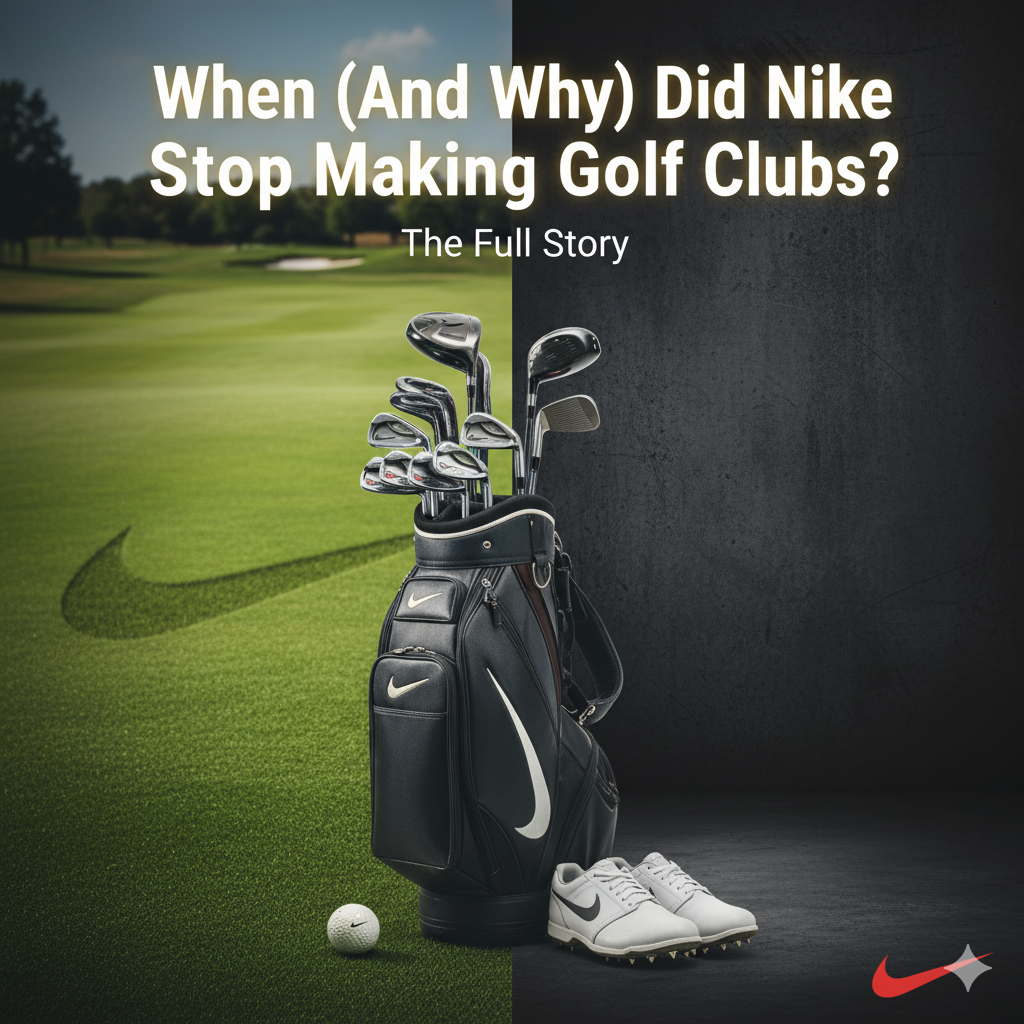When (And Why) Did Nike Stop Making Golf Clubs? The Full Story

For years, the iconic Nike “Swoosh” was a common sight on drivers, irons, putters, and full sets of Nike golf clubs. Endorsed by legends like Tiger Woods, Nike Golf was a major player. Today, if you walk into a golf shop looking for a new set, you’ll leave empty-handed. So, when did Nike stop making golf clubs, and why?
The simple answer: Nike officially exited the golf equipment business in August 2016. But the full story is more nuanced. Here’s what happened.
The Official Announcement: August 2016
On August 3, 2016, Nike announced it would transition out of producing golf equipment, including Nike drivers, irons, putters, and bags.
Nike Brand President Trevor Edwards explained:
“We’re committed to being the undisputed leader in golf footwear and apparel.”
The message was clear: the clubs were going, but Nike shoes and apparel would remain the focus.
Why Did Nike Stop Making Golf Clubs?
Despite having superstar athletes like Tiger Woods and Rory McIlroy, Nike faced several challenges:
1. Lack of Profitability
Nike’s golf division was underperforming, with the equipment sector losing money and failing to meet growth targets.
2. Fierce Market Competition
The golf club market is dominated by Titleist, Callaway, TaylorMade, and Ping. Despite marketing power, Nike struggled to capture market share.
3. Limits of Star Power
Endorsements by Tiger Woods and Rory McIlroy increased visibility, but most golfers choose clubs based on fit and technology, not just celebrity use.
4. High R&D Costs
Developing competitive Nike drivers, irons, and putters required extensive investment in materials and engineering—an area outside Nike’s core expertise.
What Happened to Nike’s Sponsored Golfers?
Tiger Woods and Rory McIlroy switched to other brands for clubs (mostly TaylorMade), but continued to wear Nike apparel and shoes, reflecting Nike’s strategic pivot.
Can You Still Buy Nike Golf Clubs Today?
Yes, but only on the secondary market:
- eBay, 2nd Swing, and used equipment retailers
- Popular items like Nike Vapor Fly drivers and irons, Nike putters, and full sets of Nike golf clubs are now collector’s items
- Accessories like Nike iron headcovers can also still be found
Conclusion: A Strategic Pivot, Not an Exit
Nike’s 2016 decision was strategic, not a failure. By focusing on apparel and footwear, Nike leveraged its strengths while leaving equipment production to specialists.
While Nike drivers, irons, and putters are no longer in stores, the Nike Swoosh continues to dominate fairways in shoes, polos, and hats around the world.
